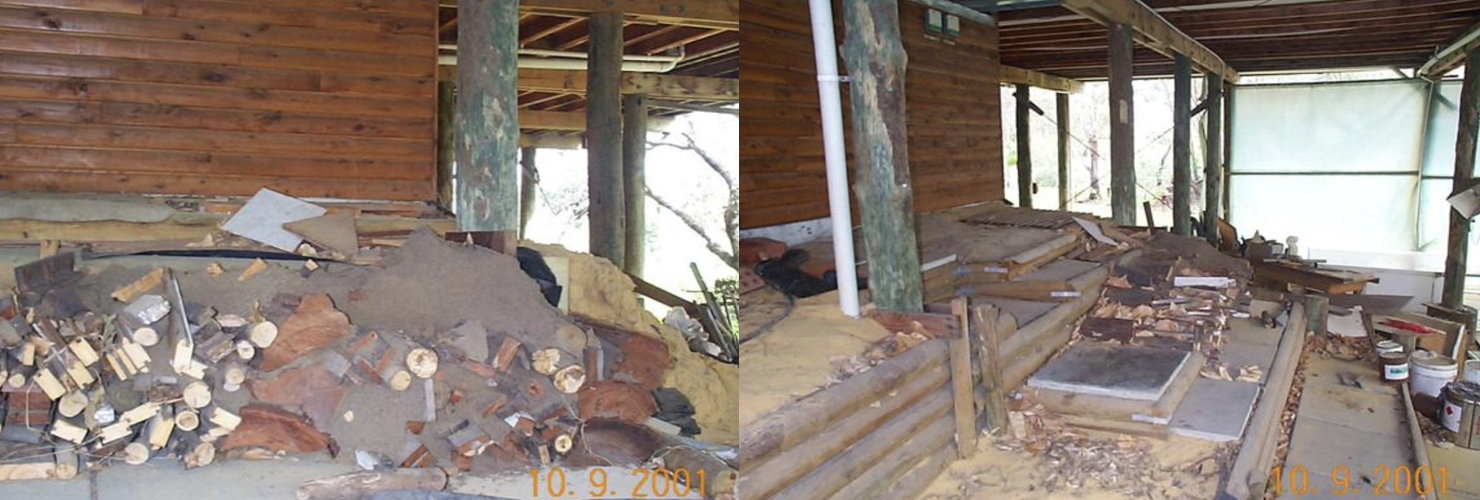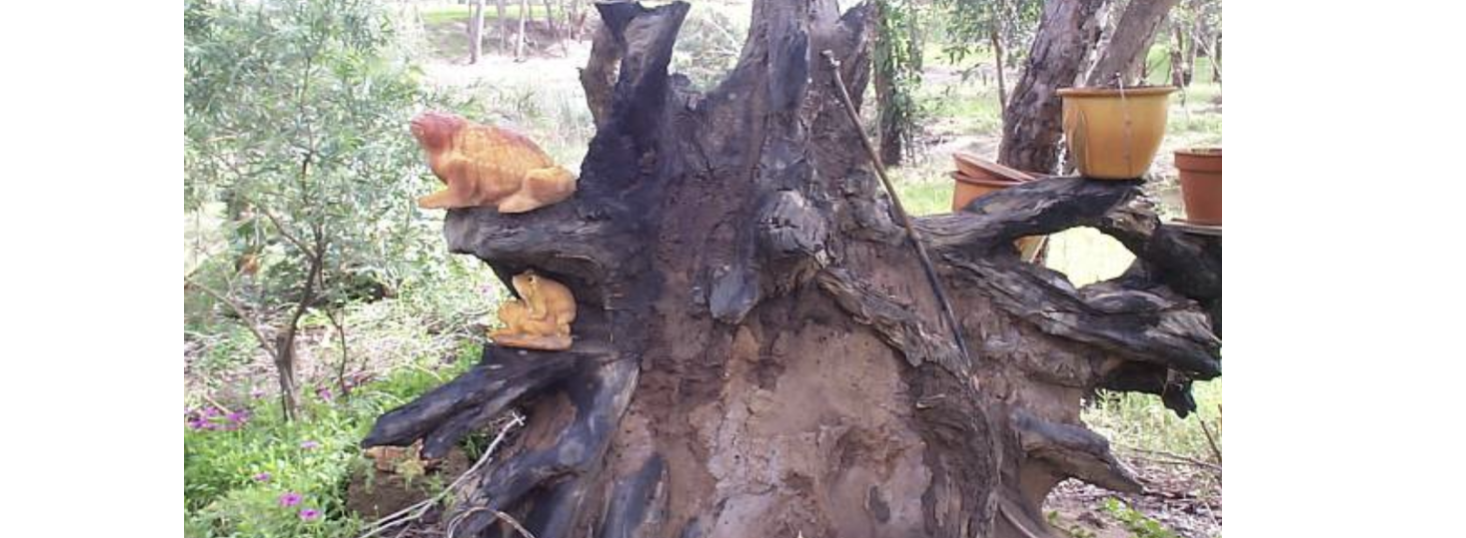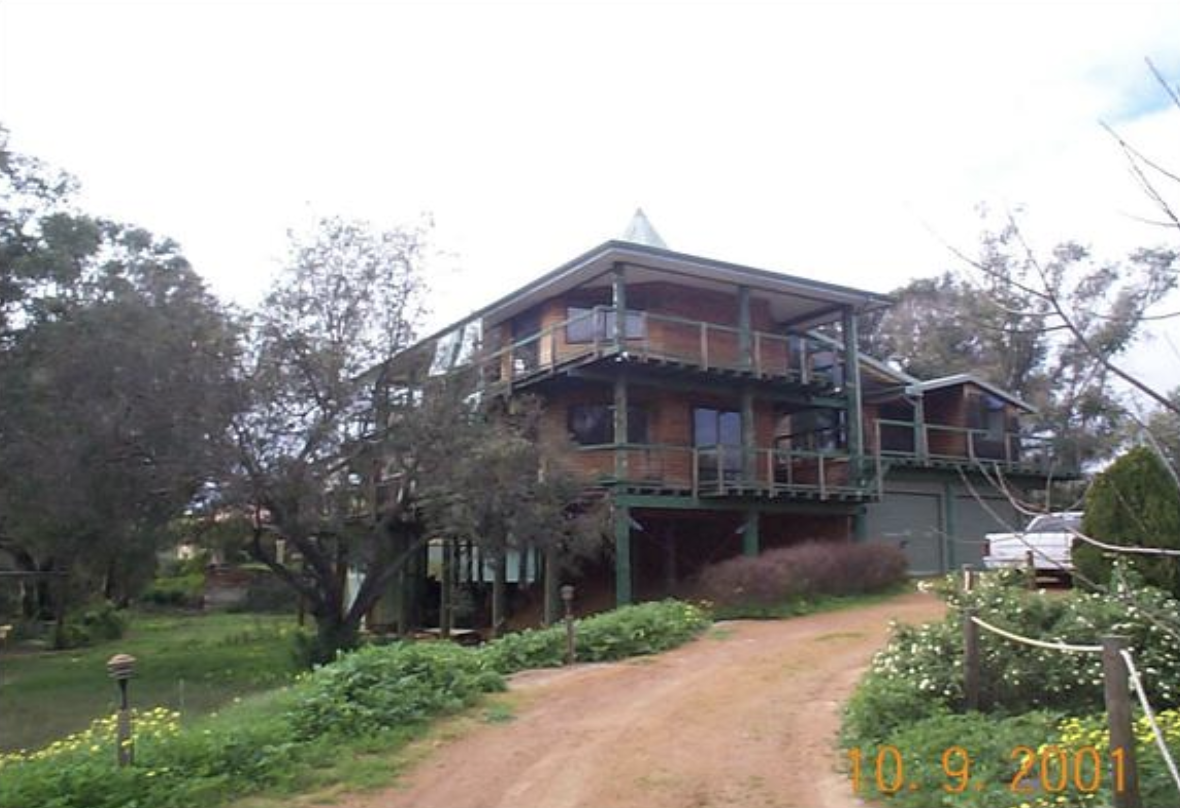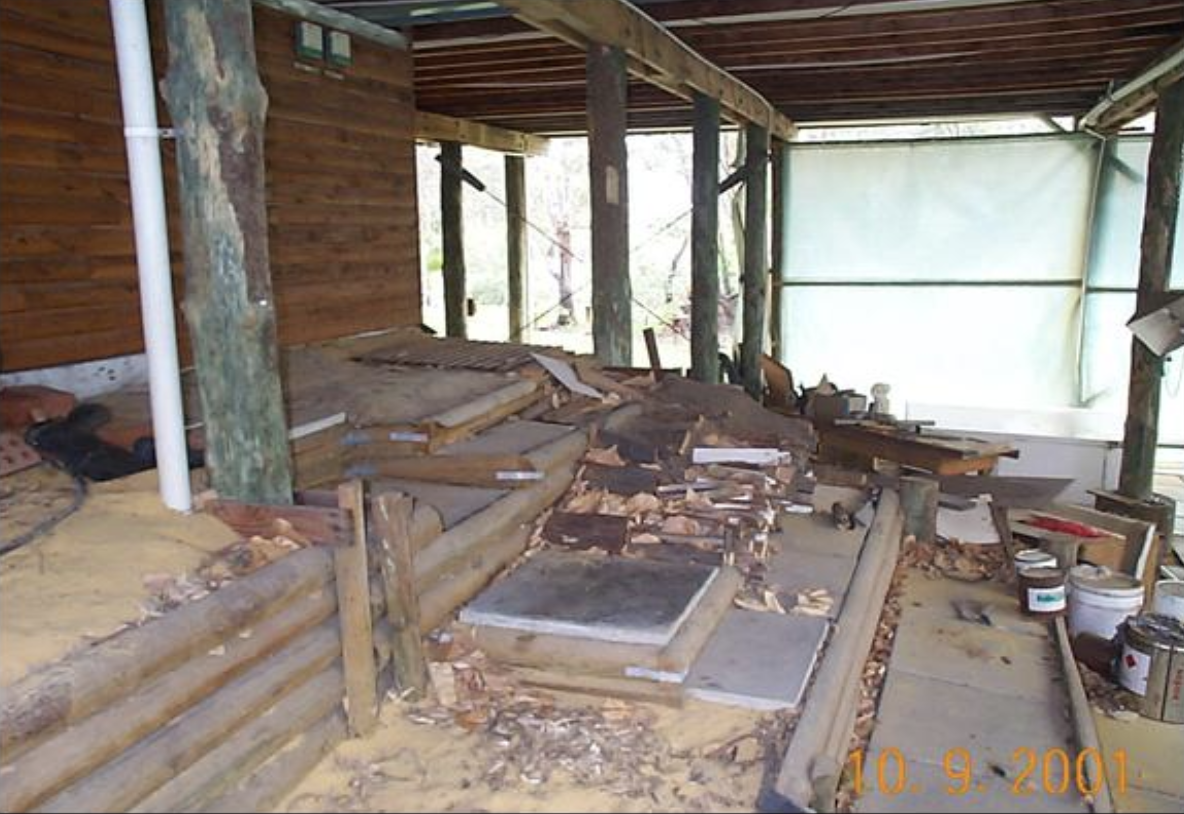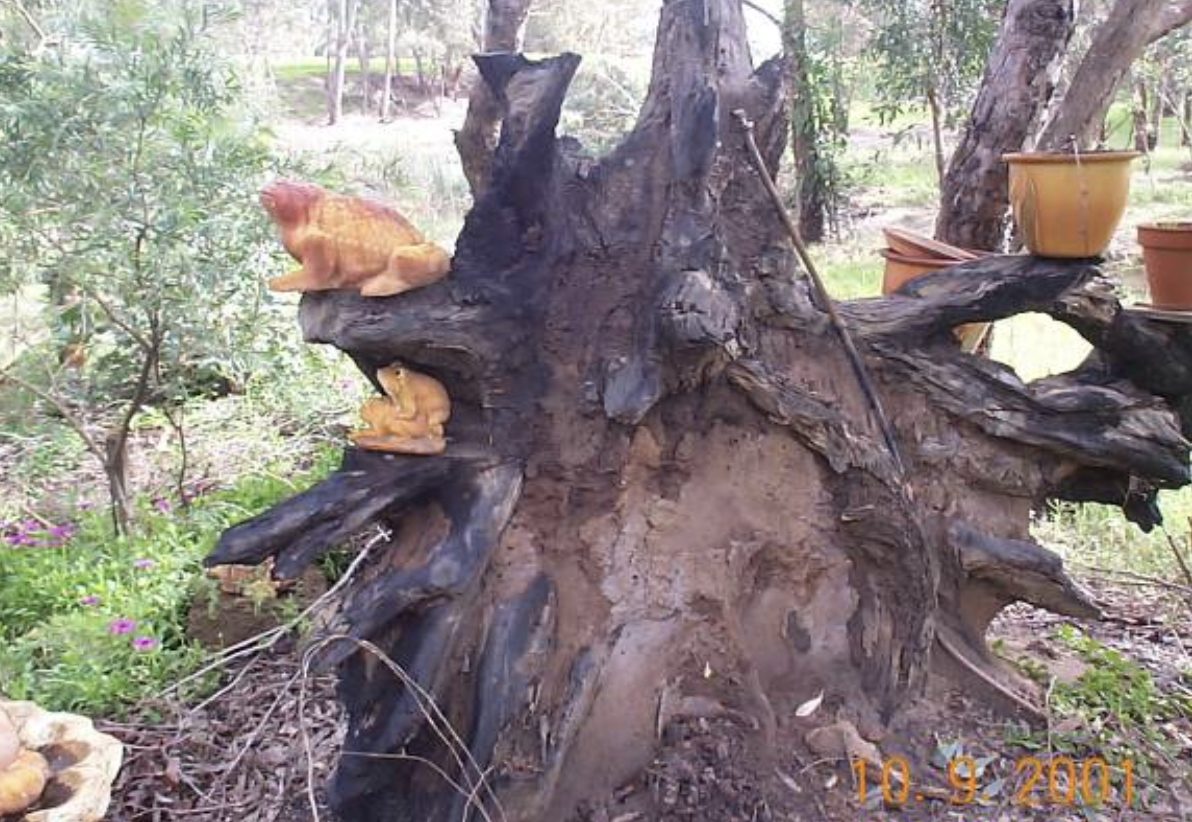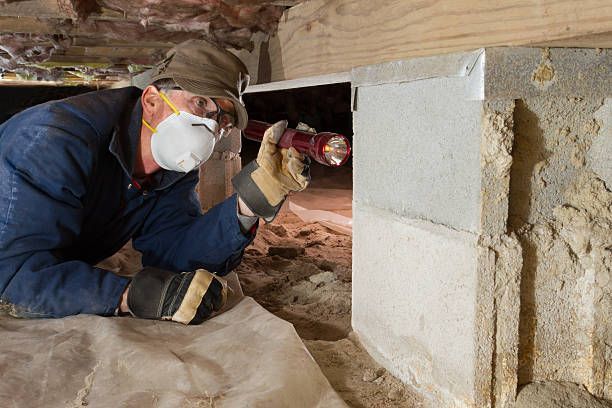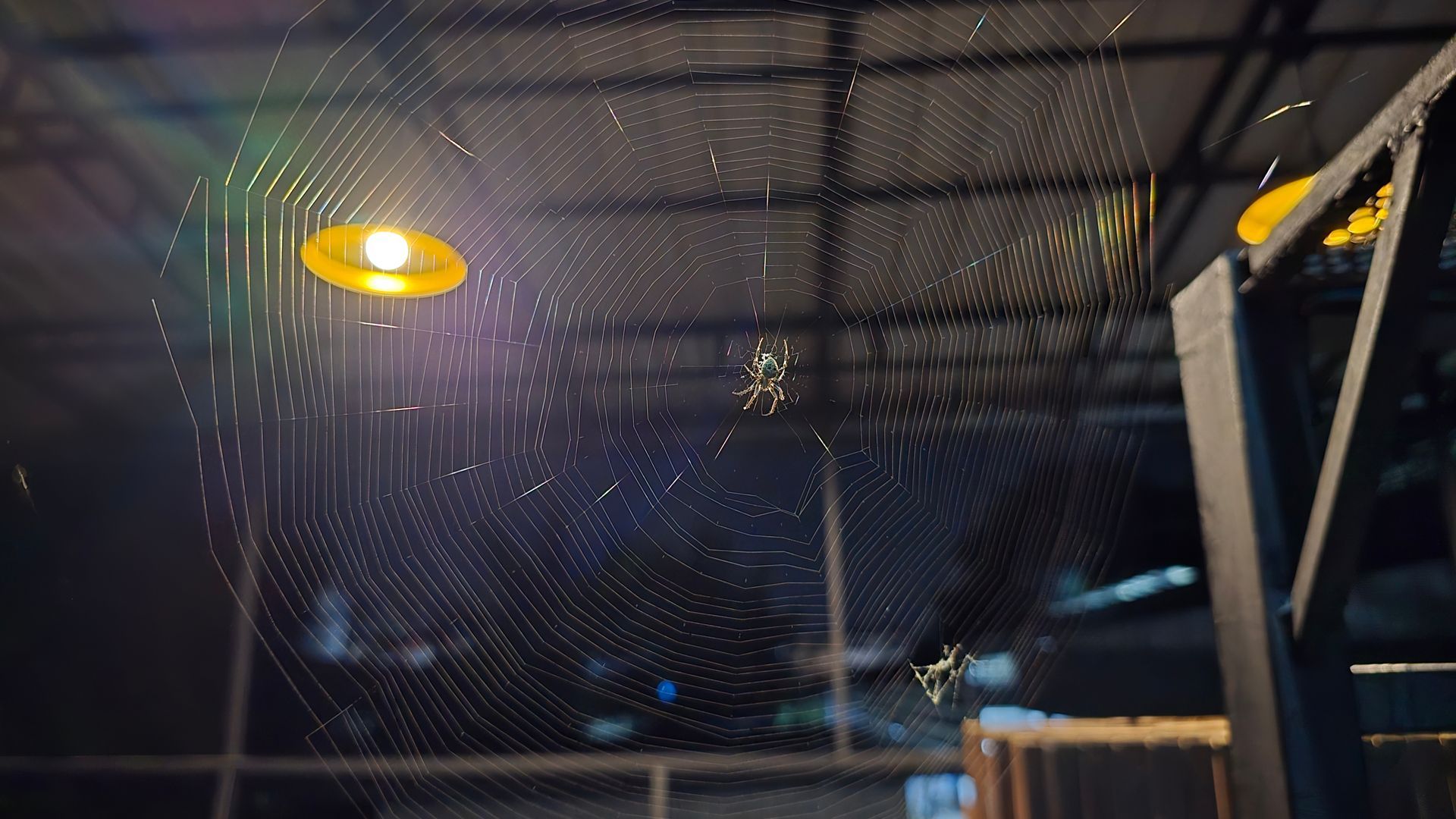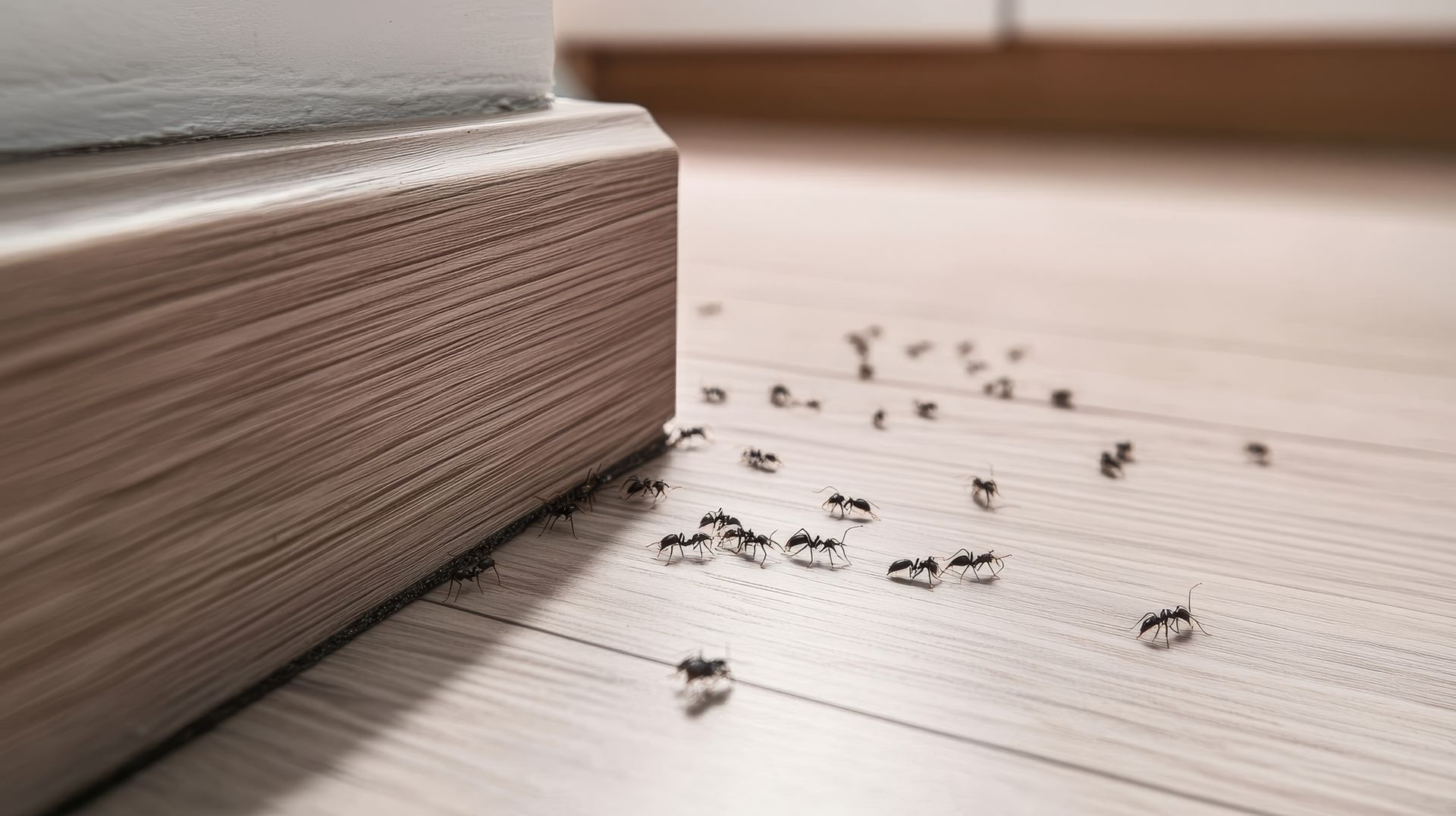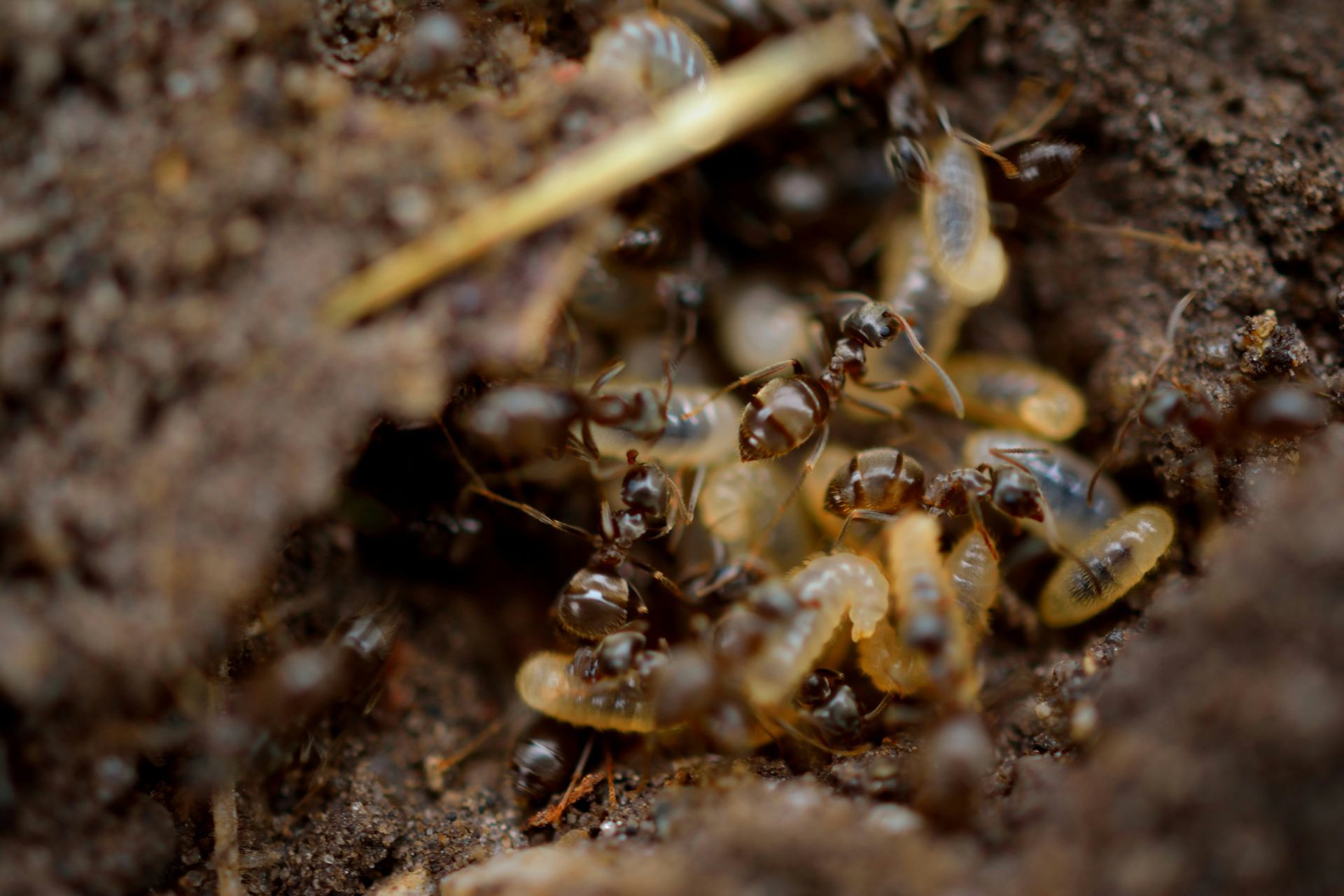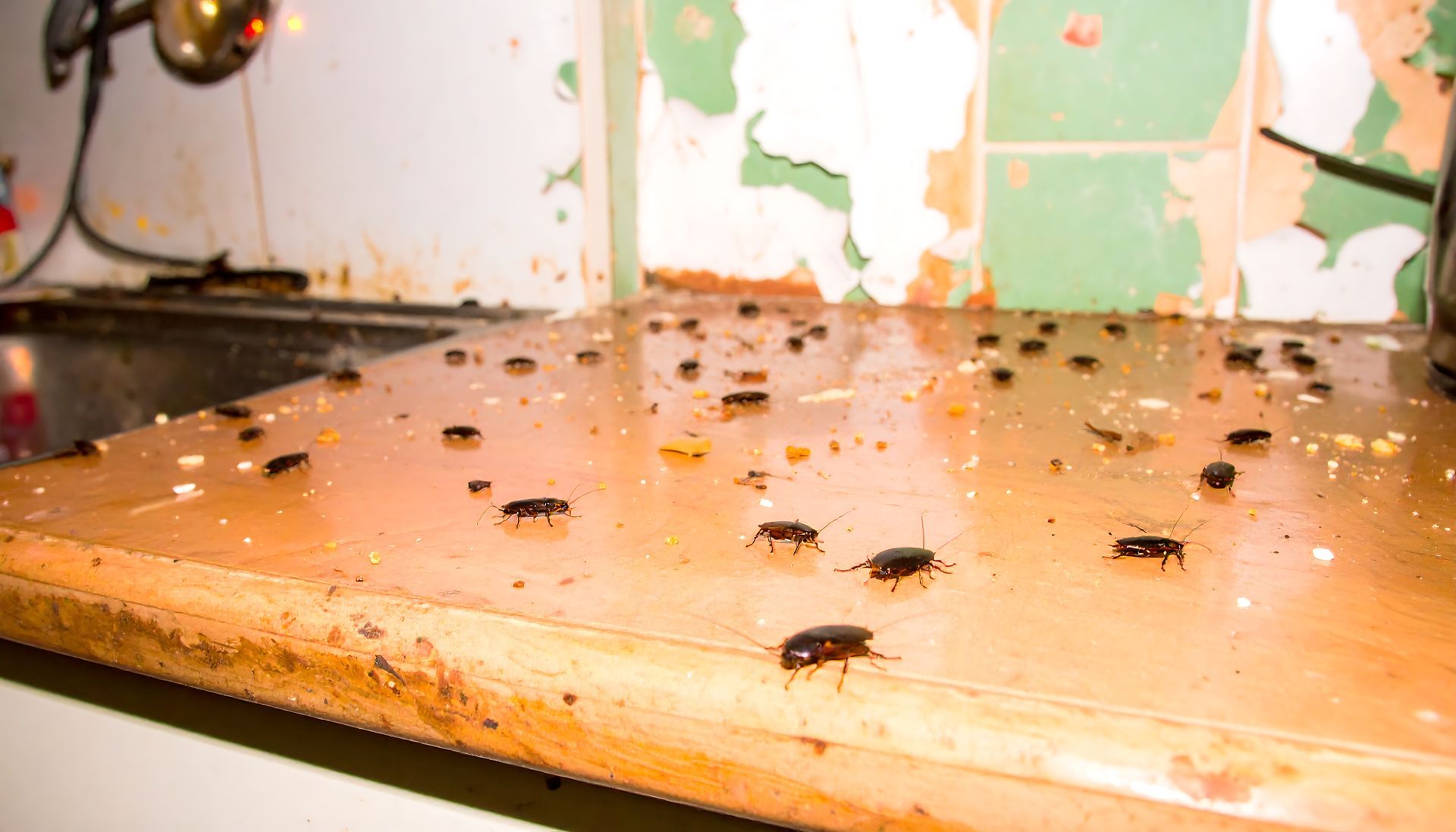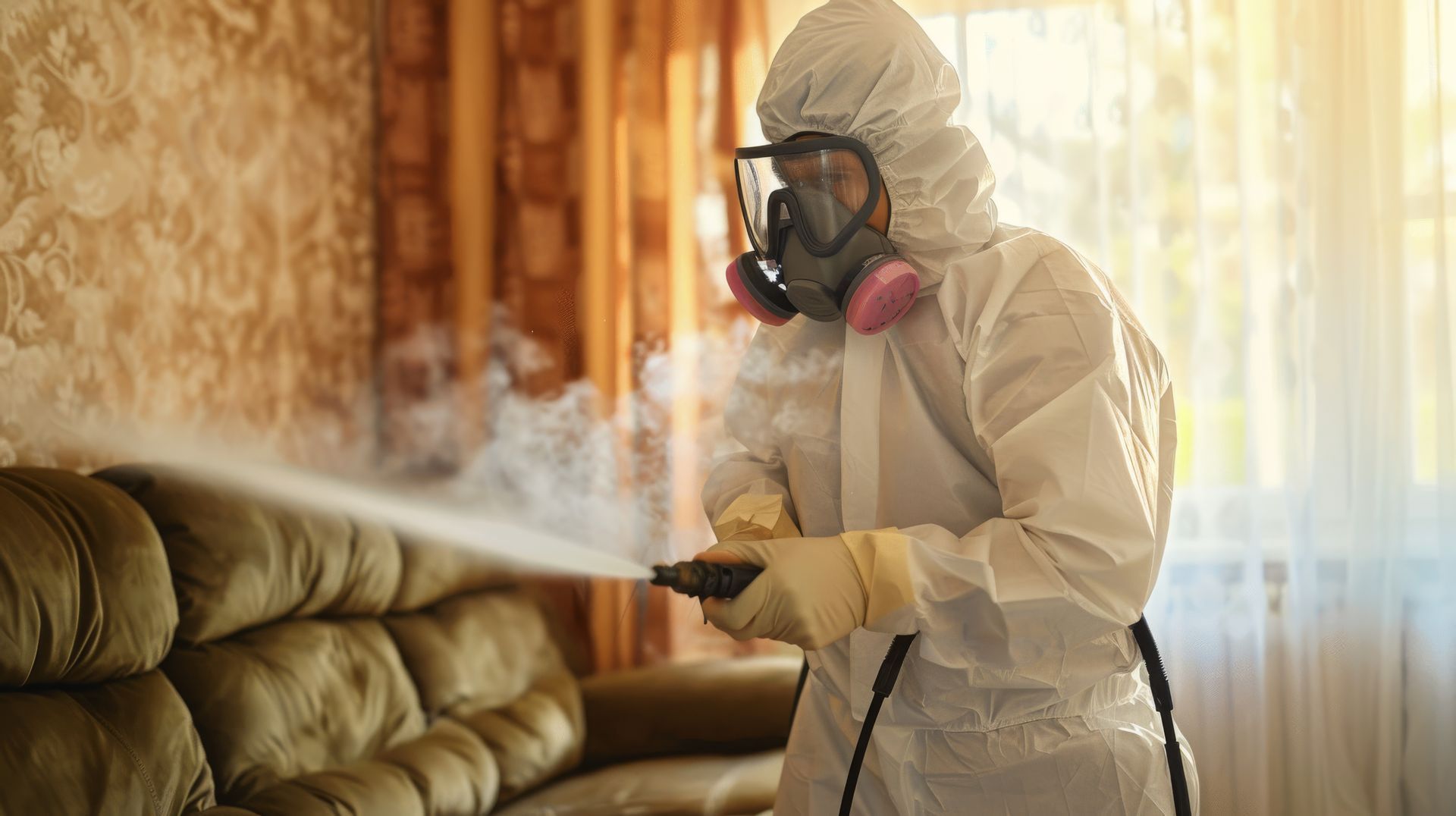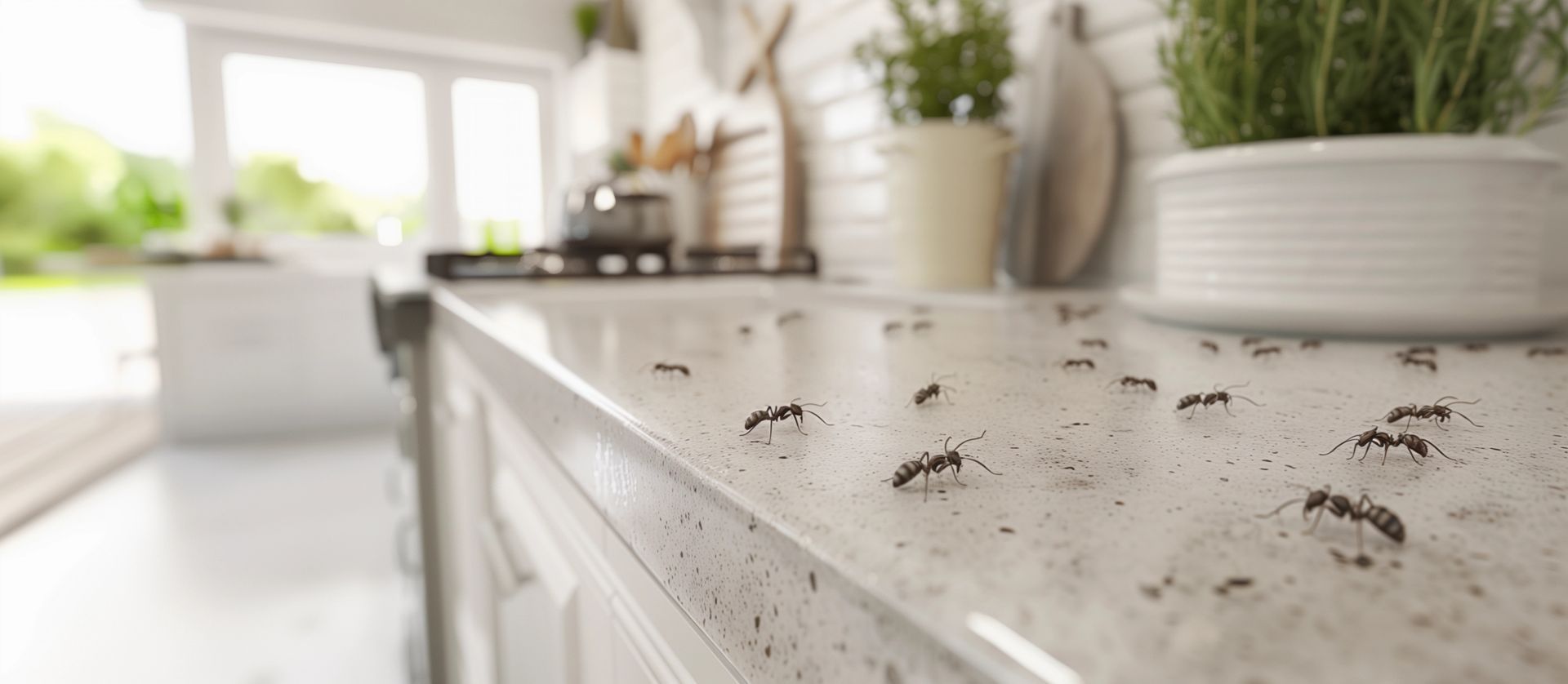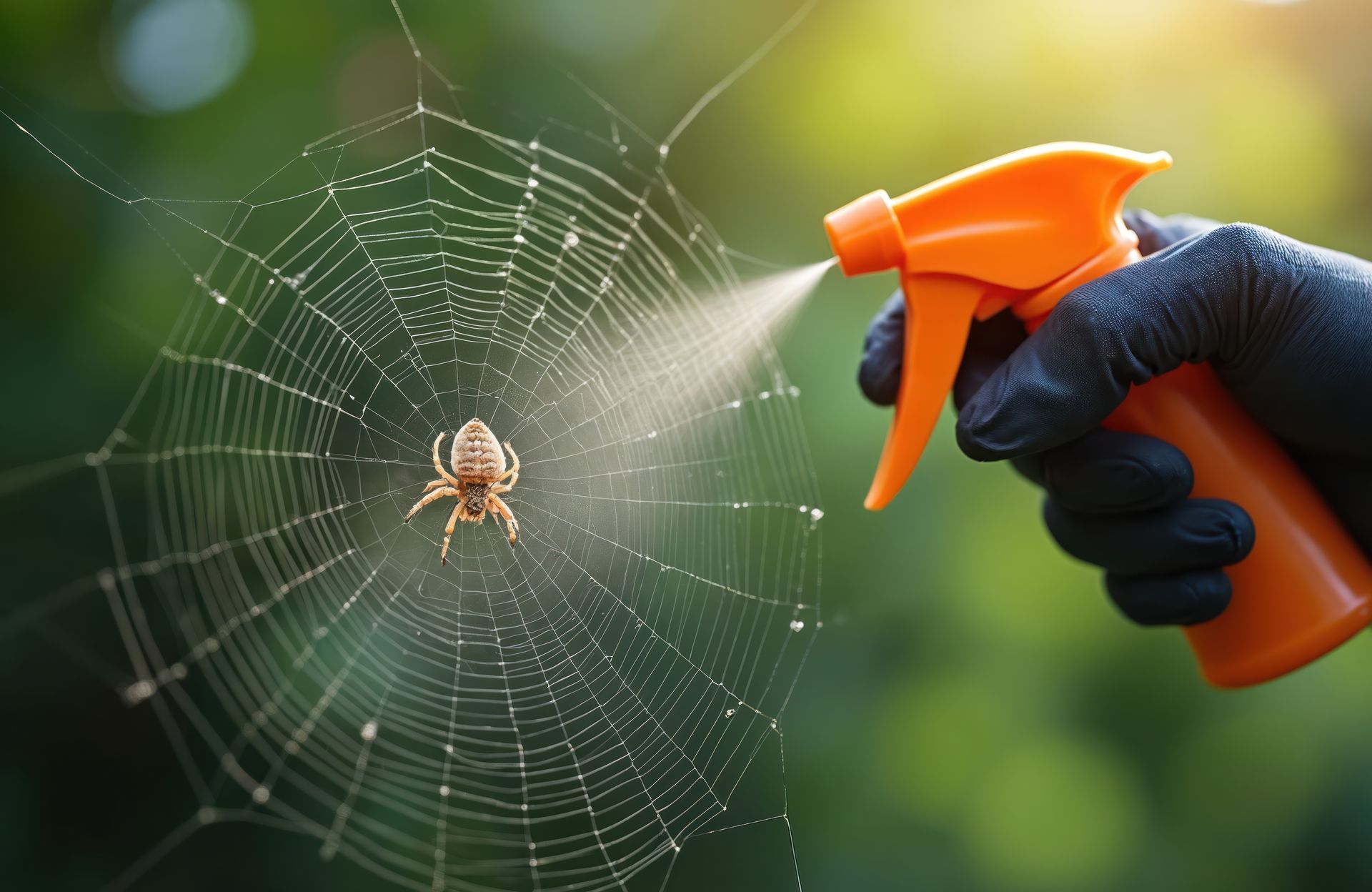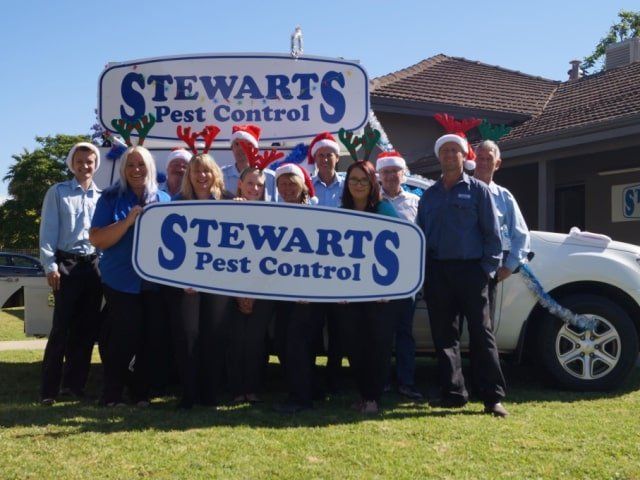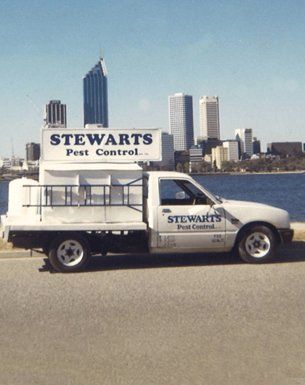By Peta Stewart
•
December 11, 2025
Are you confident your home is protected from the costly damage termites can cause? Termites are silent invaders that can compromise the structural integrity of your property without obvious signs until significant harm has already been done. For homeowners in Perth, understanding the right approach to termite management is crucial to safeguarding your investment and ensuring peace of mind. Choosing the right termite treatment option can be overwhelming, with various methods available depending on the type of infestation, property layout, and environmental considerations. Making an informed decision requires expert knowledge and experience to identify the most effective and safe solution for your home. At Stewarts Pest Control , we specialise in providing tailored termite solutions backed by years of local expertise. Whether you’re facing an active termite problem or want to implement preventative measures, we can guide you through the process with professional advice and reliable service. If you’re searching for termite treatment in Perth that protects your home thoroughly and responsibly, this guide will help you understand your options and make the best choice for your property. Understanding Termites and Their Impact What Are Termites? Termites are small, social insects that feed on cellulose, the main component of wood and other plant materials. Often called “silent destroyers,” they live in colonies that can number in the millions. Termites play an essential role in nature by breaking down dead wood and recycling nutrients. However, when they invade homes, they cause severe damage by feeding on structural timber, furniture, and other wooden materials, often unnoticed until the damage becomes extensive. Common Types of Termites Found in Australia Australia is home to several termite species, but the ones most commonly affecting homes fall into three main categories: Subterranean Termites: These are the most widespread and destructive in Australia. They build large colonies underground and create mud tunnels to access above-ground wood sources. Subterranean termites thrive in moist environments and are notorious for causing significant structural damage. How Termites Damage Homes and Why Early Treatment Is Critical Termites consume wood from the inside out, hollowing beams, floorboards, and other structural elements without obvious external signs. This hidden destruction weakens the integrity of your home, potentially leading to costly repairs or safety hazards. Early detection and treatment are vital because: Termites multiply rapidly, expanding the infestation within weeks or months. Damage accumulates silently, often going unnoticed until it becomes severe. Prompt intervention can save thousands of dollars in repair costs and preserve your home’s value. Signs of Termite Infestation to Watch For Being able to recognise the early warning signs of termites can make all the difference. Common indicators include: Mud Tubes: These narrow, dirt-covered tunnels on walls, foundations, or wooden structures provide termites with protected pathways between soil and food sources. Swarmers or Discarded Wings: Flying termites, known as Alates swarmers, emerge during breeding season. Finding discarded wings near windows or doors can indicate an infestation. Hollow or Damaged Wood: Wood that sounds hollow when tapped or shows visible damage may be infested. Frass (Termite Droppings): Drywood termites leave behind tiny, pellet-like droppings near entry points. Cracked or Bubbling Paint: Termite activity beneath surfaces can cause paint to blister or crack. Recognising these signs early and consulting professionals like Stewarts Pest Control can help you act quickly and protect your home effectively. Why Professional Termite Treatment Is Essential Limitations of DIY Termite Control While the idea of handling termite issues on your own might seem appealing, DIY termite control methods often fall short in effectively eliminating these persistent pests. Over-the-counter treatments or home remedies usually target visible signs of termites but rarely reach deep into hidden colonies or structural wood. Additionally, improper application of chemicals can pose health risks to your family and pets, or cause environmental damage. Without specialised knowledge and equipment, it’s nearly impossible to ensure complete eradication and long-term protection. Benefits of Hiring Licensed and Experienced Pest Control Experts Engaging professional pest control services offers significant advantages that DIY approaches cannot match. Licensed experts like Stewarts Pest Control have extensive training and access to advanced tools and treatment options specifically designed to target termite colonies thoroughly and safely. Professionals conduct a detailed assessment to understand the scope of the infestation and customise treatment plans tailored to your home’s unique needs. Key benefits include: Accurate Identification: Professionals can correctly identify termite species and determine the extent of the infestation, which is crucial for selecting the right treatment method. Effective Treatment Solutions: Expert applicators use industry-approved chemicals and baiting systems that comply with safety standards, ensuring effective and environmentally responsible termite control. Ongoing Monitoring and Maintenance: Pest control companies provide follow-up visits and monitoring to detect any new termite activity early and maintain your home’s protection over time. Long-Term Cost Savings by Preventing Severe Damage Investing in professional termite treatment upfront can save you significant expenses down the track. Termite damage repairs often involve structural timber replacement, pest damage remediation, and even renovations that can cost thousands of dollars. By addressing termite issues promptly and thoroughly, professional treatment prevents these costly repairs and preserves your property’s value. Moreover, some insurance policies may not cover termite damage if regular professional treatments and inspections are not documented. Having a trusted pest control partner like Stewarts Pest Control ensures your home remains safeguarded, giving you peace of mind and protecting your investment for the long term. Overview of Common Termite Treatment Options Treatment Depends on Infestation Type, Location, and Home Structure Before choosing a termite treatment, it’s important to understand that there is no one-size-fits-all solution. The best method depends on various factors such as the type of termites present, the severity and location of the infestation, the construction style of your home, and environmental considerations. Professional pest control experts carefully assess these elements to recommend the most suitable treatment option that balances effectiveness, safety, and convenience. Main Treatment Types Below is an overview of the most common termite treatment methods available to homeowners: Chemical Barrier Treatments This method involves applying a specialised chemical termiticide to the soil around and beneath your home to create a protective barrier. The chemical either repels or kills termites when they attempt to cross it. How It Works: Professionals drill into the soil and inject or apply termiticide, forming a continuous chemical shield that prevents termites from entering your home undetected. When It’s Used: Chemical barriers are often the go-to treatment for both existing infestations and preventative protection during or after construction. Key Considerations: This method requires careful application by trained technicians to ensure the barrier is complete and effective. Baiting Systems Termite baiting is a less invasive option that involves installing bait stations around your property’s perimeter. How It Works: Baits contain a slow-acting toxic substance that worker termites carry back to their colony, gradually eliminating it from within. When It’s Used: Baiting is popular for both control and monitoring, especially in environmentally sensitive areas or when chemical use needs to be minimised. Key Considerations: Baiting requires ongoing monitoring and maintenance to check bait consumption and termite activity, making it a longer-term commitment. Chemical Barrier Treatments What Chemical Barrier Treatment Involves Chemical barrier treatment is one of the most widely used and effective termite control methods. It involves applying a specialised termiticide chemical to the soil surrounding and beneath your home to create an invisible barrier. This barrier either repels termites or kills them when they come into contact with the treated soil. The treatment is designed to prevent termites from gaining access to your home’s wooden structures. How Chemical Barriers Protect Your Home The termiticide is strategically applied around the foundation and any points of potential termite entry such as slab penetrations, expansion joints, and around pipes. When subterranean termites attempt to cross the treated zone, they are either repelled or exposed to lethal doses of the chemical, which interrupts their ability to forage and survive. This protects your home by effectively blocking termites before they can enter and cause damage. Pros of Chemical Barrier Treatments Immediate Effectiveness: Chemical barriers provide a rapid and comprehensive solution, creating a protective shield around your home. Wide Coverage: The treatment covers all vulnerable entry points, providing consistent protection for the entire perimeter. Long-Lasting Protection: Modern termiticides are designed to remain active in the soil for several years, reducing the frequency of reapplication. Versatile Application: Suitable for new constructions as a preventative measure or existing homes with active infestations. Cons of Chemical Barrier Treatments Professional Application Required: The chemicals used require expert handling and precise application to ensure safety and effectiveness, making DIY attempts unsafe and often ineffective. Environmental Considerations: Although modern formulations are more environmentally friendly, chemical treatments still involve the use of pesticides, which need to be carefully managed to minimise environmental impact. Access Requirements: To apply the chemical barrier thoroughly, soil around the foundation often needs to be exposed, which may require minor landscaping or excavation work. How Stewarts Pest Control Safely Applies Chemical Barriers At Stewarts Pest Control, we prioritise both your home’s protection and environmental safety. Our licensed technicians use only approved, high-quality termiticides and follow strict application guidelines to ensure the treatment is both effective and responsibly applied. We conduct a comprehensive site assessment to identify all possible termite entry points and ensure the barrier is continuous and robust. We also provide clear advice on any preparation needed before treatment and offer follow-up inspections to monitor the barrier’s condition over time. Our goal is to deliver peace of mind by safeguarding your home against termites with minimal disruption and maximum safety. Termite Baiting Systems What Are Termite Baiting Systems? Termite baiting systems are a modern, environmentally friendly approach to managing termite infestations. Unlike chemical barriers, baiting involves placing small stations containing specially formulated bait around the perimeter of your property. These bait stations attract termites, which consume the bait and carry it back to their colony, gradually eliminating the entire termite population. How Termite Baits Work The bait contains a slow-acting substance that affects worker termites. When these termites feed on the bait and return to the nest, they share it with other colony members, including the queen. Over time, this disrupts the colony’s growth and leads to its collapse. Because the toxin acts slowly, it allows for effective distribution throughout the colony, making baiting a highly targeted control method. Pros of Termite Baiting Systems Environmentally Friendly: Baiting uses smaller amounts of chemicals concentrated in stations, reducing overall pesticide exposure to the environment. Non-Invasive: Installation requires minimal disruption to your property since bait stations are placed discreetly in the soil or around structures. Effective Colony Elimination: By targeting the colony at its source, baiting can provide long-term control beyond just treating visible infestations. Continuous Monitoring: Bait stations serve as monitoring tools, allowing for early detection of termite activity before damage occurs. Cons of Termite Baiting Systems Slower Results: Compared to chemical barriers, baiting can take several weeks or months to significantly reduce termite populations. Ongoing Maintenance Required: Regular monitoring and replenishing of bait stations are essential for continued effectiveness, requiring scheduled visits from pest control professionals. Not Suitable for Severe Infestations Alone: In cases of heavy infestation, baiting may need to be combined with other treatments for immediate control. Stewarts Pest Control’s Approach to Baiting System Installation and Maintenance At Stewarts Pest Control, we tailor termite baiting systems to suit your property’s unique needs. Our trained technicians conduct a thorough assessment to determine optimal bait station placement, ensuring maximum termite attraction and effectiveness. We install the bait stations carefully to minimise impact on your garden or landscaping. We also provide ongoing monitoring services, routinely checking stations for termite activity and replenishing bait as needed. Our experts keep detailed records to track termite presence and adjust treatment plans accordingly. This proactive approach helps catch infestations early and maintain long-term protection. For homeowners considering property purchases, we often recommend combining termite baiting with a professional pre purchase termite inspection to ensure you fully understand the termite risk before making decisions. Physical Barriers and Building Treatments What Are Physical Barriers? Physical barriers are non-chemical materials or construction techniques designed to prevent termites from accessing timber in your home. Unlike chemical treatments, these barriers rely on materials termites cannot penetrate, effectively blocking their entry routes. Physical barriers are often installed during the construction phase but can also be retrofitted to existing buildings as part of a comprehensive termite management plan. Common Types of Physical Barriers Stainless Steel Mesh: Fine stainless steel mesh can be installed around foundations, under slabs, and within wall cavities to physically block termites. This mesh is durable, corrosion-resistant, and effective at preventing termite entry. Sand Barriers: Certain sizes of sand particles create a barrier termites cannot tunnel through. Sand is laid around foundations or under slabs to create a hostile environment for termite movement. Concrete and Steel Barriers: Solid concrete slabs and steel reinforcements act as robust physical barriers during building construction, limiting termite access points. Benefits of Physical Barriers Chemical-Free Protection: Physical barriers provide termite prevention without the use of pesticides, making them ideal for environmentally conscious homeowners. Durability and Longevity: High-quality physical barriers are designed to last for the lifetime of the building with minimal maintenance. Preventative Solution: Installing physical barriers during construction helps eliminate termite risks before they arise, reducing future treatment needs. Limitations and Considerations Installation Costs: Physical barriers can be more expensive upfront compared to chemical treatments, especially when retrofitting existing homes. Retrofitting Challenges: Adding physical barriers to established properties may require invasive work such as excavation or renovations. No Active Termite Control: Physical barriers prevent termite access but do not eliminate existing colonies, so they are best used alongside other treatments if infestation is present. How Stewarts Pest Control Advises on Physical Barriers As a trusted Perth-based termite pest control company , Stewarts Pest Control offers expert guidance on integrating physical barriers into your home’s termite protection plan. For new builds or major renovations, our team works with builders and homeowners to recommend suitable barrier systems that comply with Australian standards and local building codes. For existing homes, we assess your property’s vulnerability and discuss feasible retrofit options to enhance protection. Our goal is to help you make informed decisions that balance cost, effectiveness, and environmental concerns. We also advise on combining physical barriers with chemical or baiting treatments when necessary, providing a comprehensive defence against termites. Wood Treatments and Surface Applications What Are Wood Treatments? Wood treatments involve applying chemical preservatives directly to timber surfaces to deter or eliminate termites. These treatments are designed to make the wood either toxic or unappealing to termites, thereby reducing the risk of infestation and damage. Wood treatments can be applied to both new and existing timber structures, including framing, furniture, and exposed wooden surfaces. Common Methods of Applying Wood Treatments Surface Sprays and Paints: These are chemicals applied to wood surfaces as a protective coating. They create a barrier that repels termites or kills them upon contact. This method is often used for exposed timbers and outdoor woodwork. Chemical Injections: For more severe infestations, chemicals can be injected directly into wood or around infested areas to target termites inside the timber. Pressure Treatment: During the manufacturing process, timber can be pressure-treated with preservatives to enhance termite resistance before use in construction. Pros of Wood Treatments Targeted Protection: Wood treatments focus on protecting vulnerable wooden elements in your home, especially exposed or decorative timber. Supplementary Control: When combined with other termite management methods, wood treatments add an additional layer of protection. Cost-Effective for Localised Protection: Suitable for protecting specific areas without treating the entire soil perimeter. Cons of Wood Treatments Limited Reach: Wood treatments protect only the treated timber surfaces and do not address termite colonies or infestations in the surrounding soil. Requires Regular Reapplication: Surface treatments may degrade over time due to weathering or wear and require periodic reapplication to maintain effectiveness. Not a Standalone Solution: Wood treatment alone is often insufficient for controlling or preventing termite infestations in most homes. When Wood Treatments Are Suitable Wood treatments are most effective in the following scenarios: Protecting new timber installations such as decks, pergolas, or furniture. Supplementing existing termite management plans to protect visible timber surfaces. Addressing minor or early-stage termite damage in specific areas of your home. How Stewarts Pest Control Uses Wood Treatments as Part of Integrated Pest Management At Stewarts Pest Control, we view wood treatments as an important component of a holistic termite protection strategy. Our experts assess the condition and vulnerability of your timber and recommend appropriate treatment methods based on your home’s specific needs. We ensure the use of safe, approved chemicals applied according to industry best practices to maximise protection while minimising health and environmental risks. By combining wood treatments with soil barriers, baiting systems, or physical barriers, we provide comprehensive termite defence designed to safeguard your home from all angles. Factors to Consider When Choosing a Termite Treatment Severity and Location of Infestation The extent and location of termite activity play a crucial role in deciding the appropriate treatment. A minor, localised infestation might be managed effectively with targeted treatments like wood applications or baiting systems. In contrast, widespread or structural infestations often require more aggressive measures such as chemical barriers or a comprehensive termite removal service . Early detection and accurate assessment by professionals ensure the treatment matches the infestation’s severity, preventing unnecessary costs or ineffective solutions. Type of Termite Present Different termite species exhibit varying behaviours and habitat preferences, influencing treatment choice. Subterranean termites, for example, require soil-based barriers or baiting systems, while drywood termites live within timber and may need localised wood treatments or fumigation. Correctly identifying the termite type helps tailor the treatment for maximum effectiveness. Environmental Impact and Family Safety Homeowners increasingly prioritise environmentally responsible pest control. Treatments vary in their chemical usage and ecological footprint. Baiting systems and physical barriers are often preferred in environmentally sensitive areas or where chemical exposure is a concern. Safety considerations also include protecting children, pets, and residents from harmful substances, which makes professional guidance essential to select safe yet effective options. Property Size and Structure The size, design, and construction materials of your home affect termite treatment decisions. Larger properties or complex structures may require extensive barrier treatments or multiple bait stations to ensure full protection. New builds can incorporate physical barriers during construction, while older homes may need retrofitting or combined treatment methods to address existing vulnerabilities. Budget Considerations Cost is always a factor when choosing termite treatment. Some methods, like chemical barriers, may involve higher upfront expenses but provide long-lasting protection, potentially reducing future costs. Others, such as baiting systems or wood treatments, might be more affordable initially but require ongoing maintenance. It’s important to weigh immediate costs against long-term effectiveness and property value protection. Importance of Professional Inspection and Tailored Treatment Plans Every home is unique, so a generic treatment approach rarely works. Engaging professional pest control experts ensures a thorough assessment and a customised treatment plan designed to suit your home’s specific risks and needs. Professionals use specialised tools and knowledge to identify termite activity accurately and recommend the best combination of treatments for lasting protection. At Stewarts Pest Control, we provide expert advice and tailored termite management solutions to give you confidence in protecting your home effectively and safely. Secure Your Home’s Future: Expert Termite Protection Starts Today Protecting your home from termite damage is a critical investment in its safety, value, and your family’s peace of mind. Choosing the right termite treatment option requires careful consideration of many factors, including the type and severity of the infestation, your property’s construction, environmental concerns, and budget. With so many treatment methods available, from chemical barriers to baiting systems, physical barriers, and wood treatments, it’s essential to rely on professional expertise to identify the most effective and safe solution for your unique situation. By partnering with an experienced provider like Stewarts Pest Control, you gain access to tailored termite management plans designed specifically to protect your home in Perth’s environment. Our commitment to using advanced techniques, thorough inspections, and ongoing monitoring ensures that your termite defence is comprehensive and reliable. Don’t wait until termite damage becomes visible and costly to repair. Contact Stewarts Pest Control today to schedule a professional assessment and learn how our trusted termite treatment service can safeguard your home now and into the future.

